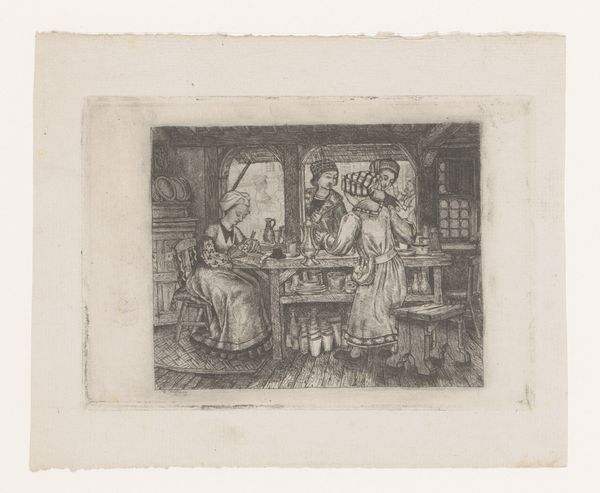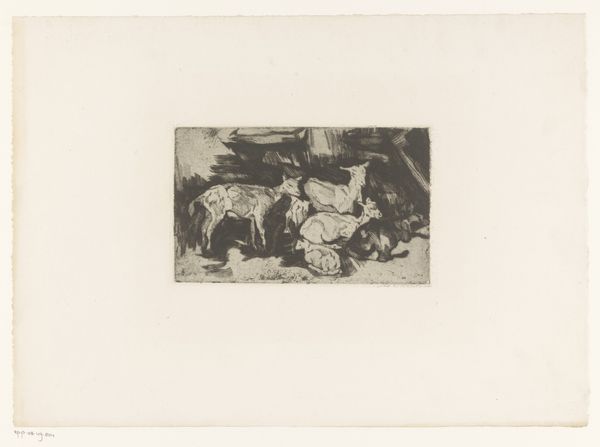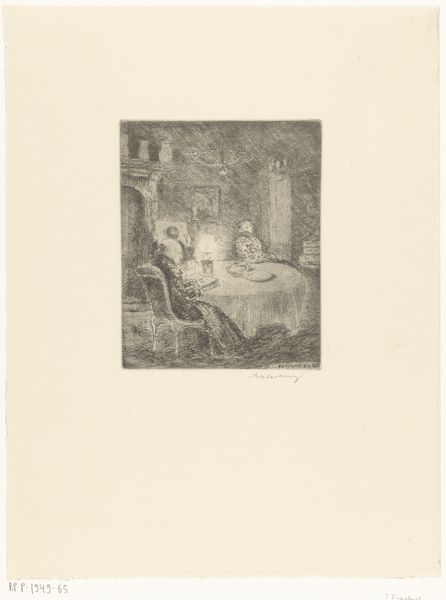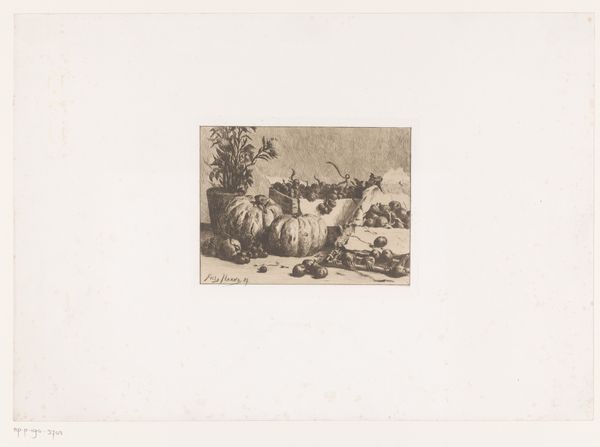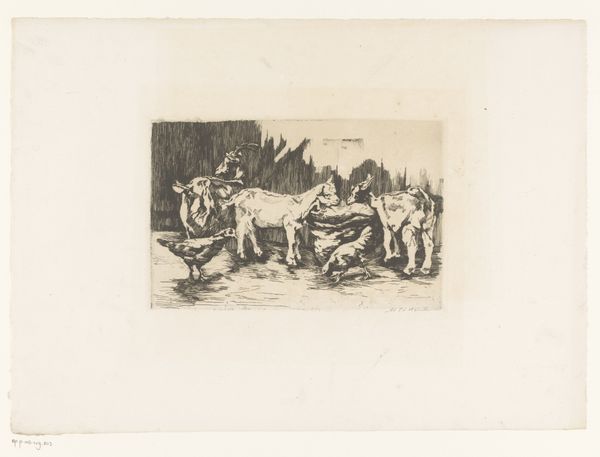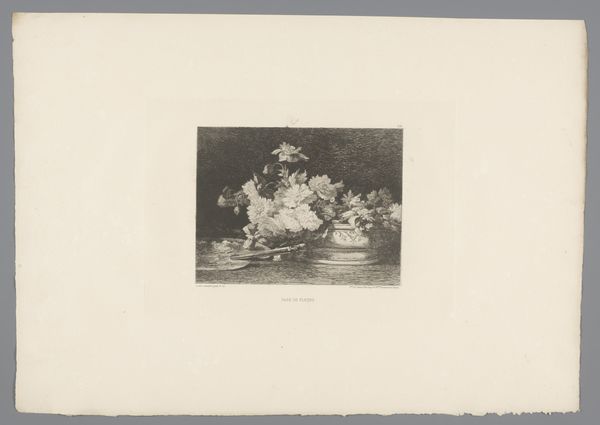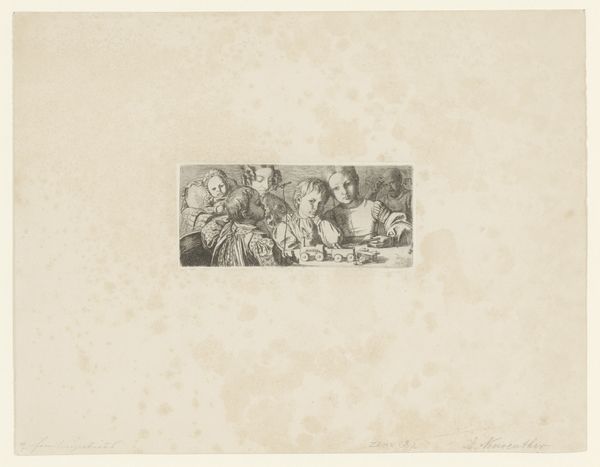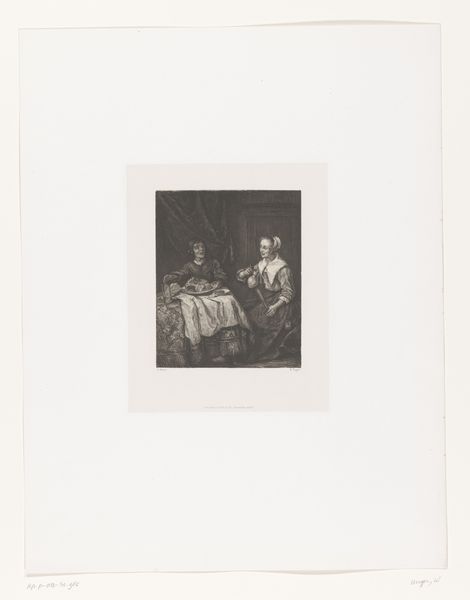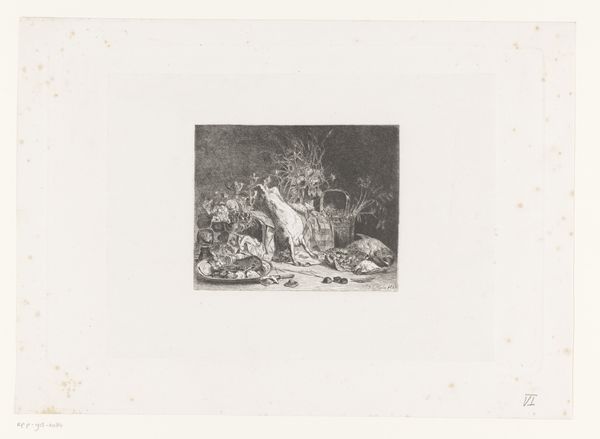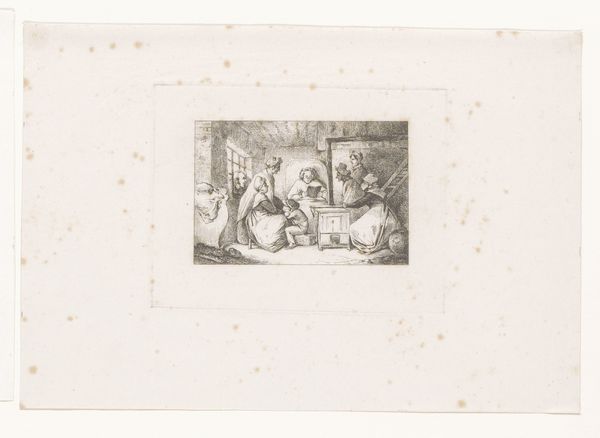
print, engraving
# print
#
genre-painting
#
engraving
#
realism
Dimensions: height 159 mm, width 238 mm
Copyright: Rijks Museum: Open Domain
Editor: So this is François Bonvin's "Still Life with Fowl", made sometime between 1827 and 1887. It’s an engraving and reminds me a bit of Dutch Golden Age paintings with the dark background. What stands out to you about this piece? Curator: Given Bonvin's context, I see this work engaging with Realism's democratizing impulse. The "genre painting" aspect, as we call it, shifts attention from grand narratives to the everyday. What might a detailed, almost forensic, depiction of game fowl communicate to an audience in, say, 1850s France, a period of significant social upheaval? Editor: Hmm, I see what you mean. So it's not *just* a still life, it is perhaps also making a statement? Curator: Exactly! Consider the rising middle class and their aspirations. The acquisition and display of food, even in art, became a signifier of status and prosperity. Bonvin, by rendering this scene with such care, perhaps is making it accessible. What about the medium, engraving? Editor: As a print, wouldn't that have been easier to circulate, making it accessible to even more people beyond the wealthy? It’s interesting to think about it being accessible instead of something for the elite. Curator: Precisely! And let's not forget the sociopolitical implications of representing ‘common’ subjects in a fine art medium. Was it controversial at the time? Editor: Probably, depending on what circles Bonvin was in, right? Curator: Yes! And it makes you think, what is our reaction today to a print of a still life with dead fowl and how might this image operate differently if it was created today instead of 150 years ago. Editor: This gives me so much to think about – it changes my understanding completely when you factor in those social and political elements.
Comments
No comments
Be the first to comment and join the conversation on the ultimate creative platform.
